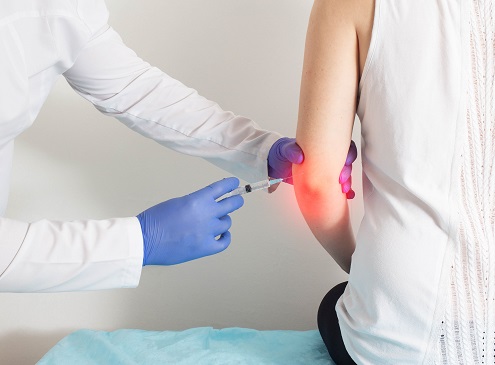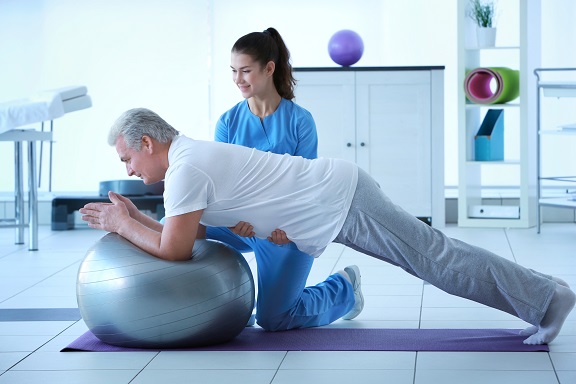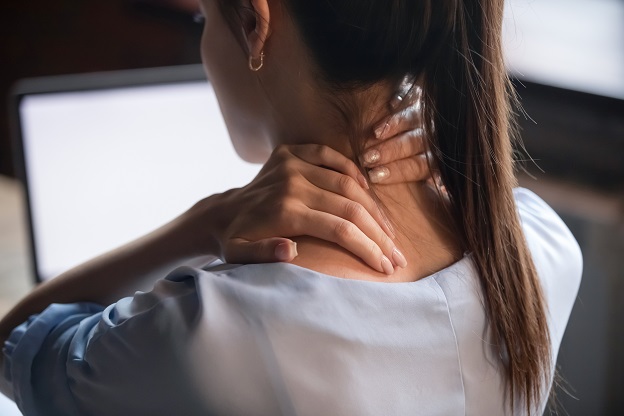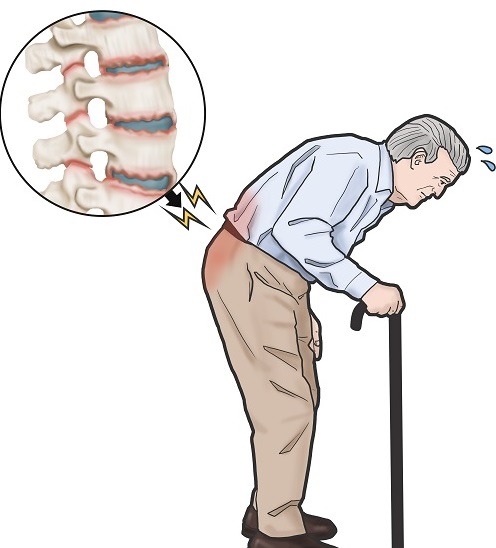One of the most common and important causes of low back pain is the hernia, straining of the disc structure between the vertebrae, caused by lifting a heavy load, then tearing the fibers around it and protruding into the neural canal of the intra-disc structure (nucleus pulposus).
Who has hernia?
Hernia is common between the ages of 30 and 50. Having a sedentary job and lifestyle, working in a fixed office environment for a long time, working in jobs that require heavy lifting, being overweight, exercising unconsciously, mis-sitting and posture disorder, driving for a long time are risk factors for the development of hernia. The more these risk factors are in a person's daily life, the higher the risk of developing a hernia in that person.
What are the symptoms of hernia?
The most common symptom of hernia is low back pain. Pain due to hernia is usually severe and the person may need to take painkillers. Patients often state that the mild lower back pain that has existed since before has increased with a strain and spreads to their legs. The pain is reduced by sitting or lying on your back. With standing and walking, the severity of pain increases. When the herniated disc comes into contact with the adjacent nerve structures, the localized pains in the waist area spread towards the leg area. Nerve root pain, commonly known as "sciatica", occurs as a result of the hernia coming into contact with the sciatic nerve, which usually occurs at the L5 and S1 spinal levels. In the sciatica case, localized pain in the waist area begins at the waist and spreads from the back of the leg to the heel area. Since the distribution of pain is along the sciatic nerve, it is defined as sciatalgia. With pain, the patient may complain of numbness, tingling, weakness and thinning of his legs. Lumbar movements are usually painful in patients. Hernia does not always cause the above symptoms. Sometimes hernia can be detected in patients who go to the doctor for routine control and in people who do not have any pain complaints in the lumbar region.
How to diagnose a hernia?
If it is thought that patients with back and leg pain may have disc hernia during the physical examination, imaging methods such as magnetic resonance (MRI) that can view the waist area in detail are requested. If the disc herniated disk detected in the MRI is compatible with the clinical examination findings, there is no need to perform EMG, which is a nerve test. However, if the disc herniation seen in the MRI and the clinical examination findings are not compatible, EMG examination, which is a nerve test, may be required. A hernia can be diagnosed with physical examination and MRI imaging.
How to treat hernia?
Most patients with hernias can recover with non-surgical treatment methods called conservative treatment (drug therapy, physical therapy and exercise, local or regional injections). Treatment is relatively easier in patients without neurological damage findings in physical examination and no nerve root pressure in MRI. Such hernias heal quickly with rest, medication and short-term physical therapy. Painkillers and muscle relaxants are used during the acute period when the pain is severe. Restricting movement and resting for a long time due to pain can cause prolonged pain. Therefore, bed rest that exceeds a few days is not recommended except for serious problems such as spinal fractures or nerve pressure, and it is preferable for patients to return to active life as soon as possible.
In cases with neurological damage findings in physical examination and nerve root pressure in MRI, the treatment time is longer and recovery is more difficult. Epidural nerve blockade can be applied in patients that cannot be controlled by drug therapy and physical therapy. In patients who last more than 6 months and do not benefit from conservative treatment, surgical consultation should be required in cases such as sudden falls on the ankle, loss of progressive force and incontinence.
While herniated discs can be healed with a simple treatment, there are patients who have become surgically operated as a result of unintended procedures and, worse, are paralyzed. The correct diagnosis is very important in order to be able to treat it in the best way, without making the hernia complicated, which can pass with a simple treatment. For this purpose, it is very important to evaluate and treat the patient diagnosed with hernia by the relevant specialist.
Those with herniated discs should pay attention;
Make sure that your waist does not remain in the cavity while sitting. If necessary, support with a hard pillow.
Don't lift heavy loads. If you need to lift it, determine the appropriate position to distribute the load evenly.
When you pick something up off the floor, instead of bending your back, squat with your knees bent.
Make sure your bed is not too soft and do not lie face down.
Perform stretching movements by standing up every half hour during long-term work at the desk.
Do exercises that strengthen the muscles in the waist area regularly.
Do not take medication on your own. Frequent use of painkillers and muscle relaxants can lead to some side effects.
When your back hurts, try to move instead of resting all day. Being immobile for a long time during pain causes these pains to recur more often.
When the pain increases, you can apply hot or cold compresses to the area.
Get rid of your excess weight. Each excess weight increases the load on the spine and hernia.






